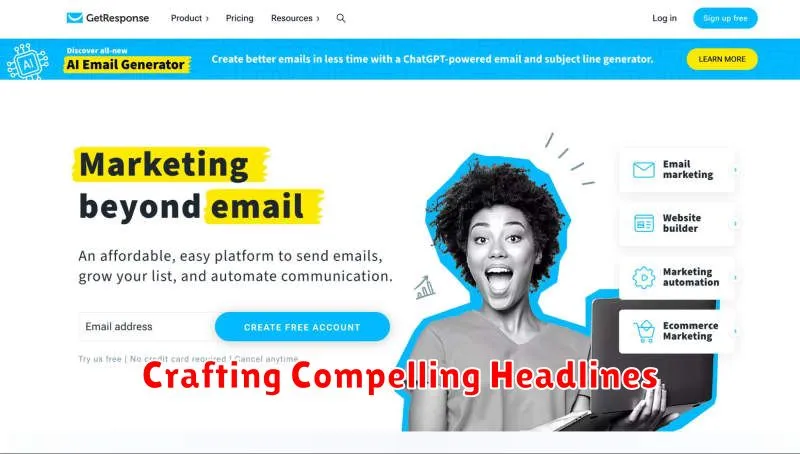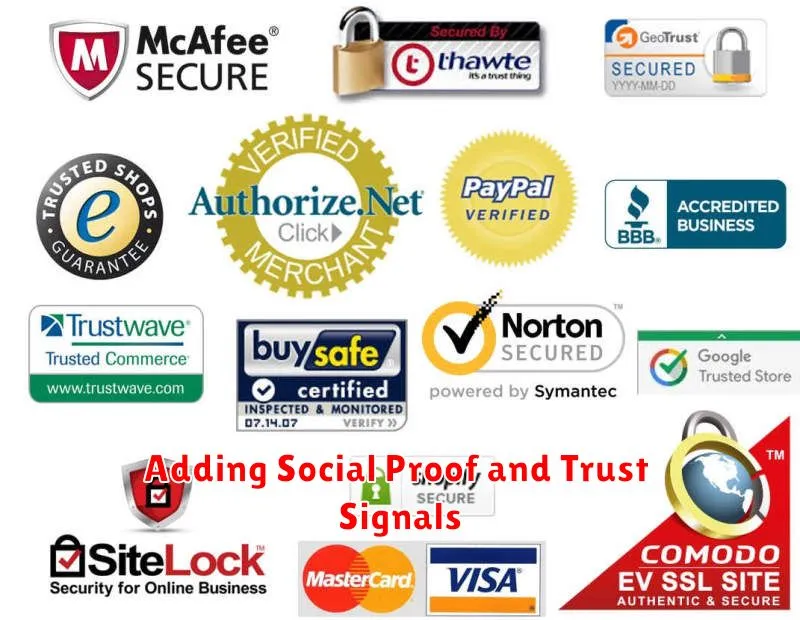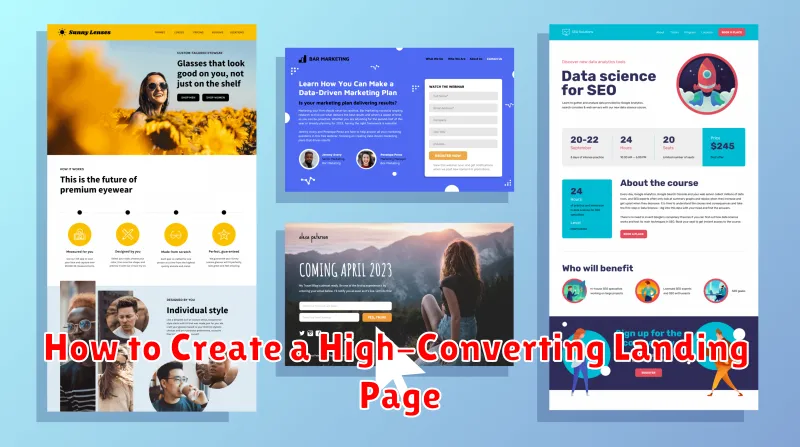Creating a high-converting landing page is crucial for any successful online marketing campaign. A landing page serves as the entry point for potential customers, and its effectiveness directly impacts your conversion rates. Whether you’re aiming to generate leads, drive sales, or promote a specific product or service, understanding how to optimize your landing page for conversions is essential for achieving your business objectives. This article will guide you through the key principles and practical steps to build a high-converting landing page that delivers exceptional results.
In the competitive digital landscape, a poorly designed landing page can mean the difference between success and failure. A high-converting landing page captures the attention of your target audience, clearly communicates your value proposition, and persuades visitors to take the desired action. We’ll explore essential elements such as compelling headlines, persuasive copywriting, effective call-to-actions, and user-friendly design, all working together to create a high-converting landing page that maximizes your return on investment.
What Makes a Landing Page Convert?
A high-converting landing page effectively guides visitors toward a desired action, whether it’s a purchase, sign-up, or download. Several key factors contribute to this success.
Clarity is paramount. Visitors should immediately understand the value proposition and the action you want them to take. A compelling headline and concise copy are essential for capturing attention and conveying the benefits.
Trust plays a vital role. Social proof, such as testimonials or client logos, can build credibility and encourage conversions. A clear privacy policy and secure checkout process also foster trust.
User experience (UX) is crucial. A clean design, easy navigation, and fast loading times contribute to a positive experience, making it more likely that visitors will complete the desired action. A prominent call to action (CTA) button is essential for guiding users towards conversion.
Crafting Compelling Headlines

Your headline is the first, and often only, impression you make on a potential customer. It’s the gateway to your landing page content. A compelling headline grabs attention, sparks curiosity, and entices visitors to learn more.
Focus on conveying a clear and concise message about the value proposition of your offering. Highlight the key benefit visitors will receive. Avoid jargon and overly technical language. Keep it simple and easy to understand.
Consider using numbers or statistics to add credibility and create a sense of urgency. Power words, such as “ultimate,” “essential,” or “powerful,” can also be effective in capturing attention.
Test different headline variations to see which performs best. A/B testing allows you to compare the effectiveness of different headlines and optimize for maximum conversions.
Using Clear Calls to Action
A compelling call to action (CTA) is crucial for converting landing page visitors into customers. Your CTA should clearly tell visitors what action you want them to take.
Use strong action verbs. Instead of “Submit,” consider using verbs like “Get Started,” “Download Now,” or “Claim Your Free Trial.” The wording should reflect the value proposition offered on the landing page.
Design your CTA to stand out. Use contrasting colors and ensure the button is visually prominent. Size also matters; make the button large enough to be easily clickable on both desktop and mobile devices.
Keep the CTA concise and above the fold. Users shouldn’t have to scroll down to find the main CTA. Limit the text on the button to a few words that create a sense of urgency or excitement.
Test different CTAs. A/B testing different variations allows you to identify which phrasing, color, and placement resonates most effectively with your target audience, ultimately leading to higher conversion rates.
Optimizing for Mobile Devices
In today’s mobile-first world, ensuring your landing page is fully optimized for mobile devices is no longer a luxury, but a necessity. A seamless mobile experience is crucial for maximizing conversions.
Consider these key aspects for mobile optimization:
- Responsive Design: Your landing page should automatically adjust its layout and content to fit any screen size, providing a consistent user experience across all devices.
- Page Speed: Mobile users expect fast loading times. Optimize images, minimize HTTP requests, and leverage browser caching to ensure a speedy experience. A slow-loading page will lead to high bounce rates.
- Touch-Friendly Elements: Design with larger buttons, forms, and navigation elements to accommodate touch interactions. Avoid elements that are difficult to tap on a smaller screen.
- Simplified Forms: Minimize form fields to the essentials. Long, complex forms can be frustrating on mobile, deterring conversions. Consider using autofill features where possible.
By focusing on these core elements, you can significantly improve your landing page’s performance on mobile devices, ultimately leading to higher conversion rates.
Adding Social Proof and Trust Signals

Social proof and trust signals are crucial for increasing conversions on your landing page. They provide visitors with the reassurance they need to take the desired action.
Testimonials are a powerful form of social proof. Feature short, impactful quotes from satisfied customers. If possible, include their name, title, and company.
Displaying logos of recognizable clients you’ve worked with can significantly boost credibility, especially in B2B contexts.
Statistics and data can further reinforce your value proposition. For example, “95% of customers report increased productivity” is more persuasive than simply stating “Our product increases productivity.”
Security badges and certifications, such as McAfee Secure or VeriSign, build trust by assuring visitors that their information is safe. Clearly display these badges near forms or checkout buttons.
Guarantees, like money-back guarantees or satisfaction guarantees, minimize perceived risk and encourage conversions.
A/B Testing Layouts
A/B testing is crucial for optimizing your landing page layout for conversions. This involves creating two or more versions (A and B, or more) of your landing page with variations in layout elements. These variations could include changes in the placement of your call-to-action (CTA) button, different headline placements, varying image positions, or form layouts.
By showing these different versions to separate segments of your audience, you can gather data on which layout performs best. Track key metrics like conversion rates, bounce rates, and time spent on page to determine the most effective design. This data-driven approach allows you to make informed decisions about which layout resonates most with your target audience and drives the desired action.
Remember to test one element at a time to isolate the impact of each change. For example, if you’re testing CTA button placement, keep other elements consistent between versions A and B. This focused approach provides clearer insights into the effectiveness of specific layout choices.

